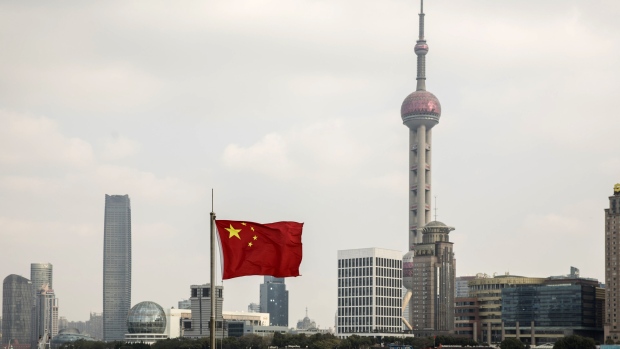Mar 11, 2019
Global economy hits its weakest spell since financial crisis
, Bloomberg News

The global economy’s sharp loss of speed through 2018 has left the pace of expansion the weakest since the global financial crisis a decade ago, according to Bloomberg Economics.
Its new GDP tracker puts world growth at 2.1 percent on a quarter-on-quarter annualized basis, down from about 4 percent in the middle of last year. While there’s a chance that the economy may find a foothold and arrest the slowdown, “the risk is that downward momentum will be self-sustaining,” say economists Dan Hanson and Tom Orlik.
The reasons for hope? The Federal Reserve’s decision to pause its interest-rate hikes, a U.S.-China trade truce and the fading of the shocks that battered Europe in 2018 could mean stabilization is around the corner. Other central banks have also stepped up, with the European Central Bank last week announcing new measures to help the economy through the current weakness.
But the global economy is not out of the woods. The OECD’s latest composite leading indicator -- published Monday -- indicates easing momentum in the U.S., the U.K., Canada, and the euro area as a whole, including Germany and Italy. There are, however, signs of stabilization in China.
Despite the gloom, ECB policy makers have been keen to put a brave face on the deterioration, pushing the view the euro zone is experiencing a slowdown, not a recession.
“We are still seeing robust economic growth, although it’s less strong than before,” Executive Board member Benoit Coeure said in an interview with Italian newspaper Corriere della Sera published Monday. “It will take longer for inflation to reach our objective, but it will get there. We are reacting to the developments we have seen so far.”
What Bloomberg Economists Say
“The cyclical upswing that took hold of the global economy in mid-2017 was never going to last. Even so, the extent of the slowdown since late last year has surprised many economists, including us.”
There has been a modest pickup in some economic numbers recently, though also high-profile disappointments. U.S. retail sales rose in January after the biggest fall in almost a decade in December. A measure that some view as a cleaner gauge of consumer demand jumped 1.1 per cent.
Last week, the U.S. reported employers added the fewest jobs in more than two years. There may have been one-off factors to blame, but the scale of the miss puts in focus the idea that the economy’s losing steam.
In Germany, industrial output unexpectedly fell in January, though a large upward revision to December nullified some of the gloom. A manufacturing index points to an extended slump, and production has posted year-on-year declines three months in a row.

